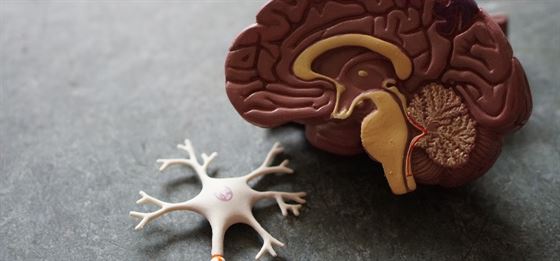
EMDR Explained Simply

EMDR Explained Simply
Eye Movement Desensitization and Reprocessing (EMDR) is a therapeutic approach that has gained recognition for its effectiveness in treating trauma and related mental health issues. Developed by psychologist Dr. Francine Shapiro in the late 1980s, EMDR has been extensively researched and is widely used by therapists worldwide. But what exactly is EMDR, and how does it work?
What is EMDR?
EMDR is a type of psychotherapy designed to help individuals process and heal from traumatic experiences and distressing memories. Unlike traditional talk therapy, EMDR focuses on the brain's natural healing processes. It integrates elements from various therapeutic approaches but is unique in its use of bilateral stimulation, most commonly through guided eye movements.
The Basics of EMDR Therapy
At its core, EMDR aims to help individuals reprocess traumatic memories so they no longer cause emotional distress. Here’s a straightforward breakdown of how EMDR therapy typically unfolds:
1. History and Treatment Planning: The therapist begins by taking a detailed history of the client's psychological issues and identifying specific traumatic memories to target. This phase also involves creating a treatment plan tailored to the individual's needs.
2. Preparation: The therapist explains the EMDR process to the client, ensuring they understand what to expect. Techniques for managing stress and emotions are also taught, providing the client with tools to use between sessions.
3. Assessment: The therapist and client identify a specific traumatic memory to work on. The client is asked to focus on different aspects of this memory, such as the visual image, negative beliefs about themselves, and physical sensations associated with the memory.
4. Desensitization: This is where the bilateral stimulation comes in. The client focuses on the traumatic memory while following the therapist’s finger moving back and forth, listening to alternating tones, or feeling taps on their hands. This process is believed to help the brain reprocess the memory, reducing its emotional impact.
5. Installation: After the emotional distress associated with the memory is reduced, the therapist helps the client install a positive belief about themselves related to the memory. This might involve replacing a negative belief like "I am powerless" with a positive one like "I am in control."
6. Body Scan: The client focuses on the traumatic memory again to see if any residual physical tension remains. If any distress is noted, further processing is done until the memory no longer triggers a negative physical response.
7. Closure: At the end of each session, the therapist ensures the client feels stable and equipped to handle any emotions that might arise before the next session. Relaxation techniques and coping strategies are reinforced.
8. Reevaluation: In subsequent sessions, the therapist checks in on previously processed memories to ensure they no longer cause distress and addresses any new memories or issues that have surfaced.
How Does EMDR Work?
Our brains have a natural ability to heal from psychological trauma, similar to how our bodies heal from physical wounds. Traumatic experiences, however, can overwhelm this process, leaving memories unprocessed and stuck. EMDR helps unlock these memories, allowing the brain to process and integrate them properly.
EMDR (eye movements) is thought to mimic the brain’s natural processes during REM sleep, a stage of sleep associated with processing and integrating information. This stimulation may help rewire the brain and desensitize the emotional impact of traumatic memories.
EMDR requires the client to focus on the traumatic memory while simultaneously engaging in a distracting activity. This dual attention is believed to reduce the memory's vividness and emotional intensity, making it easier to process.
Benefits of EMDR
EMDR has been proven effective in treating various psychological issues, including:
- Post-Traumatic Stress Disorder (PTSD): EMDR is well-known for its effectiveness in treating PTSD. Numerous studies have shown significant reductions in PTSD symptoms after EMDR therapy.
- Anxiety and Depression: EMDR can help address the root causes of anxiety and depression, leading to long-term improvement in these conditions.
- Phobias and Panic Disorders: By reprocessing distressing memories, EMDR can reduce the frequency and intensity of phobic reactions and panic attacks.
- Grief and Loss: EMDR can help individuals process the complex emotions associated with grief and loss, facilitating a healthier grieving process.
- Chronic Pain: Emerging research suggests that EMDR may be beneficial in managing chronic pain, especially when pain is linked to past trauma.
Conclusion
EMDR offers a powerful, evidence-based approach for treating PTSD, helping individuals reprocess traumatic memories and reduce their emotional impact. By leveraging the brain’s natural healing processes, EMDR provides rapid and long-lasting relief from the debilitating symptoms of PTSD. If you or someone you know is struggling with PTSD, exploring EMDR therapy with a trained professional could be a transformative step toward recovery and healing.
Articles
Build your awareness and get inspired with our researched articles on how you can strengthen your well-being
Popular Topics
An OTP has been sent to the email address
provided.
Please check your Inbox and Spam folders.

What Would You Like to Speak with a Specialist About?
Mental Fitness Journey starts Now!
Chearful Connects you with Top-tier Qualified Wellness specialists for the Price of a cup of Coffee!

Next Steps
- A Client Team member will reach out to you to schedule a session with the most suitable specialist.
- You will receive an email with a 10% Discount Code* for your 1st session.
- We invite you to Explore the Platform & Sign Up today! *Upto a maximum of $10 discount on a session purchased




 2948 Read
2948 Read



.jpg)







.png)

.jpg)

.jpg)



.jpg)






























.jpg)
























